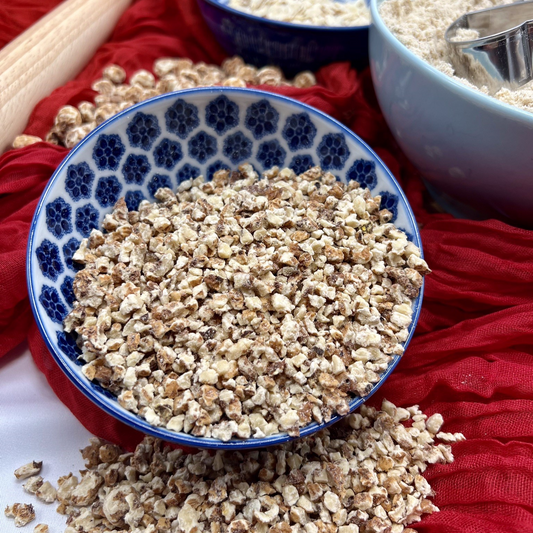
The following article appeared in Paleo Magazine, hope you like it
“The Paleo diet is not a historical reenactment.”
We hear this phrase over and over, most often in defense of modern foods like nut flours and butters, or the occasional square of dark chocolate. But what if it could be? What if there were a tasty, portable snack that could help bridge the gap between modern cave people and our Paleolithic ancestors?
The next time the “modern food” issue comes up in a debate, toss a bag of tiger nuts at the dissenter.
Tiger nuts are not nuts at all, but are in fact the tuberous root of a wild grass that originated on the African continent. Commonly called chufa sedge, nut grass or earth almond, the tiger nut is experiencing a culinary resurgence in Spain, where it is commonly enjoyed as horchata, a creamy, dairy-free beverage made from tiger nuts, dates and filtered water.
Considered “the world’s first cultivated food,” evidence points to widespread consumption of tiger nuts in ancient Egypt. The dried tubers have been found in predynastic Egyptian tombs from 600 years ago, and current research on hominid development point to tiger nuts—or a similar starchy tuber—as one of the key food sources for early humans. 
Tiger nuts boast about 33 percent fiber, and thus offer a good source of prebiotic fuel for gut flora. Additionally, magnesium, potassium, iron, zinc and copper are abundant in tiger nuts, and they offer a rich source of resistant starch. But these tubers aren’t all starch and no substance. With a lipid profile similar to that of olive oil, tiger nuts have a macronutrient ratio almost identical to that of human breast milk.
Tiger nuts grow much like potatoes: The leafy stalks spring up from the ground, while below the surface of the earth, clusters of these little tubers are knit together by fine filaments of root. They only grow in certain parts of the world—climate and soil health are big factors—and the ones currently sold by Tiger Nuts USA are cultivated in Valencia on the eastern coast of Spain.
Tiger Nuts USA offers two varieties, peeled and unpeeled, although Paleo Magazine only received the peeled tubers to sample. Packaged in a 5-ounce bag, the company’s (appropriately named) Tiger Nuts are small, and look a bit like lumpy beige golf balls or round, shelled peanuts with their pitted skin. Their nutty texture is similar to that of the macadamia, and they have a toasted, sweet flavor. In fact, some of the best descriptors for the flavor of these tubers are those shared with the honey-nut cereals that made their rounds in pre-Paleo-diet breakfasts.
The tubers are absolutely packed with fiber, and this can make them a little tough to chew. But after the first bite or two, they release moisture and sweetness, and just a handful is extremely satisfying.
The Tiger Nuts USA website recommends them as a great snack for anyone with blood sugar control issues, dairy or gluten intolerances, nut allergies (remember, they’re a tuber) or just a general snacking habit. The high mineral content and extreme satiation would indeed make these little tubers a good snack for anyone pursuing nutrient density on a Paleo diet, and if you imagine hard enough, you may be able to feel the breezes of the African plains as you munch on this truly Paleolithic snack.
For more information or for online ordering, visit tigernutsusa.com.












